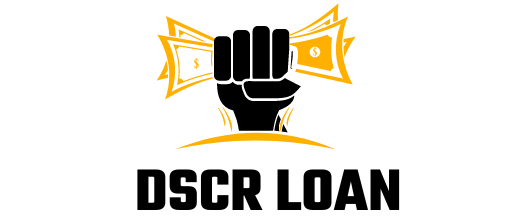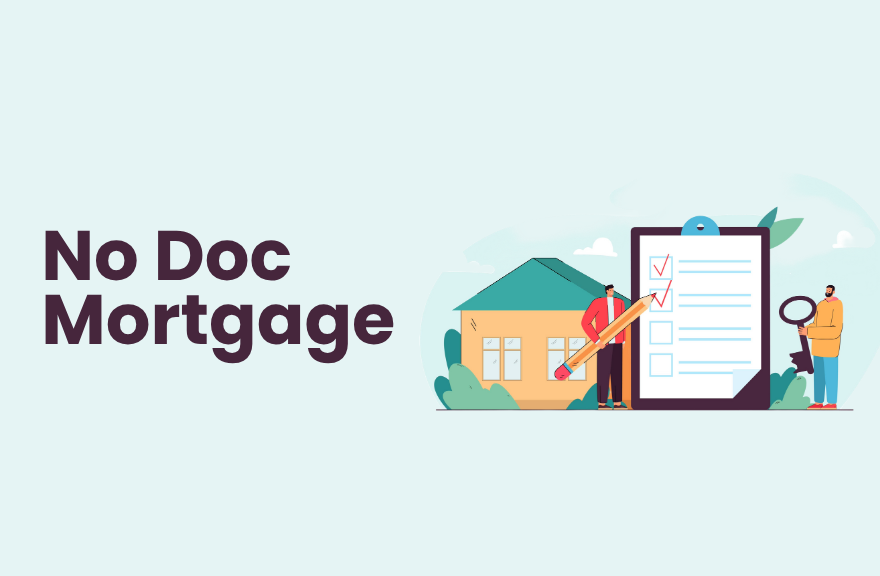For many Americans, securing a traditional mortgage requires submitting mountains of paperwork, including pay stubs, tax returns, and employment records. For self-employed individuals, freelancers, or those with irregular income, this process can be overwhelming and discouraging. In these situations, No Doc Mortgages offer a practical solution, allowing borrowers to obtain home financing without conventional income verification. These loans open the door to homeownership for those who may not meet standard lender requirements while still being financially responsible.
In this article, we will cover how these loans function, the types of loans available, who qualifies, risks and benefits, practical tips for approval, and some alternatives. Whether you are a self-employed business owner, investor, or independent contractor, understanding these options can help you make informed decisions in 2025.
Understanding No Doc Mortgages
A No Doc Mortgages is a type of home loan where traditional proof of income is not required. Unlike conventional loans, which often involve submitting tax returns, W-2 forms, and detailed employment verification, these loans rely on alternative data to assess the borrower’s ability to repay. Lenders typically focus on credit score, assets, and down payment size rather than income documentation.
These loans are especially suited for borrowers with non-traditional income sources. Examples include self-employed business owners, freelancers, real estate investors, commission-based employees, and retirees with substantial assets. By focusing on financial stability and creditworthiness rather than rigid income verification, lenders can extend mortgage options to a wider audience.
How These Loans Work
The process for no doc loan is streamlined compared to traditional loans. Borrowers usually submit minimal documentation, often limited to bank statements or a signed declaration of income. Lenders then evaluate creditworthiness by examining credit scores, loan-to-value ratios, and available assets. Approval decisions rely on the overall risk assessment rather than on verified income data.
Some lenders may still require asset verification or bank statements, but applicants avoid submitting tax returns or pay stubs. This simplified approach often results in quicker approval timelines, making it an appealing choice for borrowers who want efficiency without sacrificing credibility.
The flexibility of these loans also allows for different approaches depending on the borrower’s situation. For instance, self-employed individuals may demonstrate repayment ability through consistent deposits or documented business revenue, while retirees can leverage substantial savings or investment accounts.
Types of No Doc Loans
No doc loans are not a one-size-fits-all product; they come in various forms designed to suit different borrower needs.
One common option is the No Income, No Asset (NINA) Loan, where borrowers do not need to disclose income or assets. Lenders approve applicants primarily based on credit history and property value.
Another variation is the Stated Income, Stated Assets (SISA) Loan, which allows borrowers to declare income and assets without verification. This type is often preferred by business owners with strong credit who want to maintain privacy regarding their financial records.
A slightly more conservative option is the Stated Income, Verified Assets (SIVA) Loan, where income is declared and assets are verified by the lender. This approach balances flexibility with caution.
Lastly, some lenders offer No Income Verification Loans, which rely on 12 to 24 months of bank statements to demonstrate consistent cash flow. This allows borrowers to showcase financial stability without providing traditional documentation.
Why Borrowers Opt for These Loans
Many borrowers choose No Doc Loan because they allow individuals with unconventional income structures to qualify for home financing. For self-employed individuals, regular pay stubs are often unavailable, but consistent deposits or asset holdings can demonstrate the ability to repay. Privacy is another consideration; some borrowers prefer not to share detailed tax returns or financial statements with lenders.
Those with fluctuating incomes, such as freelancers, seasonal employees, or commission-based workers, also find these loans appealing. Traditional lenders may find it challenging to assess irregular earnings, while these loans rely on alternative documentation to confirm financial responsibility.
Additionally, the streamlined application and reduced paperwork typically lead to faster approvals and closing timelines. This efficiency is particularly valuable in competitive real estate markets, where timing can significantly impact a borrower’s ability to secure a property.
Pros and Cons of No Doc Loans
Understanding the advantages and limitations of no doc mortgages is crucial before applying. On the positive side, these loans simplify the application process by reducing or eliminating the need for tax returns and pay stubs. They provide self-employed borrowers with access to financing on their terms, often resulting in quicker approvals and closings. Qualification focuses on overall financial stability and creditworthiness rather than rigid income verification, which can benefit borrowers with strong assets but unconventional income.
On the downside, interest rates are generally higher due to increased lender risk. Down payments are typically larger, often ranging from 20 to 30 percent, and credit score requirements are more stringent. Not all banks and mortgage lenders offer these loans, which may limit options for some borrowers. It’s essential to weigh these factors carefully and understand how they affect affordability and repayment.
Eligibility Criteria
No doc mortgages are not suitable for every borrower. Lenders seek indicators of financial responsibility even in the absence of traditional income verification. Most lenders require a minimum credit score of 680, though higher scores improve approval chances. Down payments are usually substantial, and lenders often look for several months of cash reserves to ensure repayment ability.
The type of property can also influence eligibility. Primary residences, second homes, and certain investment properties may qualify, but requirements vary by lender. Some lenders may request alternative proof of income, such as bank statements, rental income histories, or business revenue data, to gauge repayment capacity.
Steps to Apply Successfully
Applying for a no doc loan requires preparation, even if documentation is simplified. Start by identifying lenders that specialize in no doc or Non-QM loans, often catering to self-employed borrowers, investors, and freelancers. Gather alternative documentation, such as bank statements, asset statements, or letters of income declaration, to support your application.
Ensure your credit score meets lender requirements, and prepare a down payment sufficient to satisfy loan-to-value ratios. Comparing multiple lenders can help identify the best terms, interest rates, and fees. Once ready, submit your application and respond promptly to any follow-up inquiries. Upon approval, complete standard closing procedures, including inspections and final paperwork.
Real-World Example
Sarah, a seasoned freelance graphic designer earning between $90,000 and $120,000 annually, faced challenges when applying for a traditional mortgage. Her reported taxable income was much lower due to legitimate business deductions, which led to rejection by conventional lenders. Her professional experience managing freelance finances made her aware of alternative financing options.
By working with a reputable lender specializing in these loans, Sarah successfully applied for a no documentation mortgage. Using 12 months of verified bank deposits, she demonstrated consistent cash flow. She contributed a 25 percent down payment and agreed to a slightly higher interest rate, ultimately securing her dream condo. This case highlights how well-informed borrowers can responsibly navigate alternative mortgage solutions.
Legal Considerations
No doc loans are legal but more regulated than before the 2008 financial crisis. Stricter guidelines ensure borrowers have the ability to repay the loan, even without conventional income verification. Lenders must document financial responsibility, protecting both parties from unsustainable debt and preventing reckless lending practices. These loans are intended for responsible borrowers with strong credit, assets, or significant down payments.
Alternatives to No Doc Loan
For those seeking alternatives, several options exist. Bank statement loans allow lenders to review 12 to 24 months of bank statements instead of tax records. Asset-based mortgages focus primarily on liquid assets, making them suitable for retirees or those with substantial investments. DSCR loans are designed for real estate investors and assess rental property cash flow rather than personal income. Non-QM loans offer flexible underwriting for borrowers who fall outside conventional lending guidelines.
Tips for Getting Approved
Improving credit scores, saving for a larger down payment, and maintaining consistent bank statements are essential steps. Avoid taking on new debt during the application process and consider consulting a mortgage broker specializing in no doc or Non-QM loans. These measures can increase the likelihood of approval and help secure favorable loan terms.
Common Misconceptions
Many borrowers misunderstand these types of loans. They do not mean “no verification at all.” Lenders still evaluate credit profiles and financial stability. Approval is not guaranteed, as these loans are designed for financially responsible individuals. Modern versions are different from the reckless subprime loans of the past, with strict underwriting standards in place to protect borrowers and help lenders mitigate risk.
Conclusion
No Doc Mortgages offer an effective solution for self-employed individuals, freelancers, and those with alternative income streams who struggle to qualify for traditional mortgages. While interest rates may be higher and credit requirements stricter, they provide a streamlined path to homeownership. In 2025, these loans remain legal, regulated, and tailored for qualified borrowers. By working with experienced lenders or mortgage brokers, borrowers can navigate the process successfully and achieve their homeownership goals without the burden of traditional documentation.
FAQs
What is the minimum credit score needed?
Most lenders require at least a 680 credit score, though lower scores may be accepted with a higher down payment.
Do I still need to show employment history?
Not necessarily. Some lenders focus entirely on credit and assets instead of traditional income.
Can I use a no doc funding for investment properties?
Yes, particularly if you are a real estate investor with strong rental income or cash flow from the property.
Are interest rates higher?
Typically, yes. Expect rates 1 to 2 percent higher than traditional mortgages.
Are these loans available in all states?
Availability varies by state and lender. Consult a mortgage broker or financial advisor in your area.

Introducing Emily Parker, a seasoned professional with over 5 years of expertise in DSCR loans. With her extensive knowledge and experience in the field, Varsha has consistently demonstrated a deep understanding of DSCR loan intricacies and a proven track record of delivering successful outcomes for her clients.

